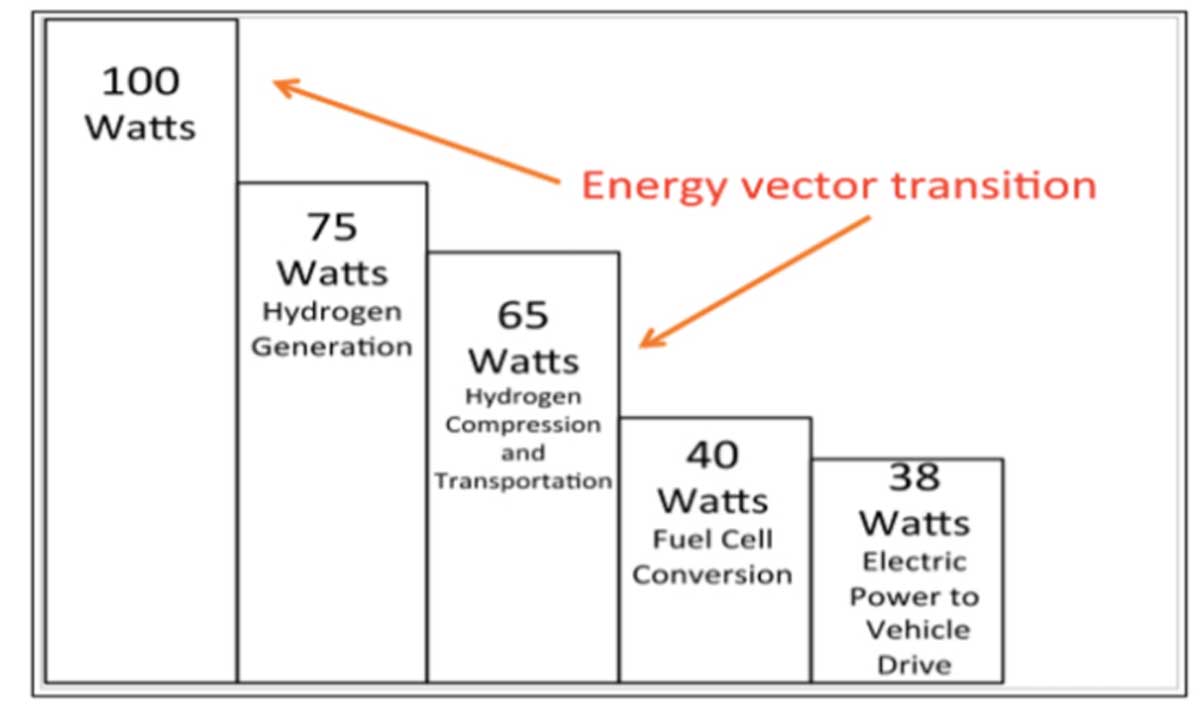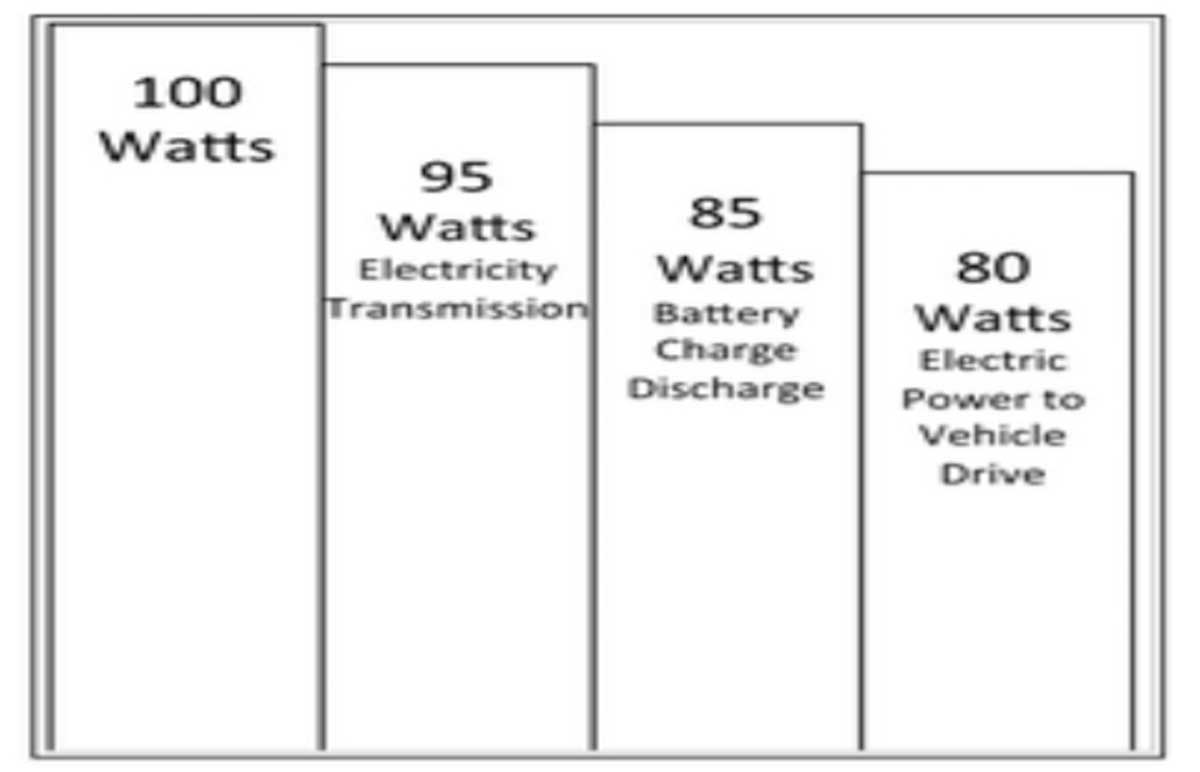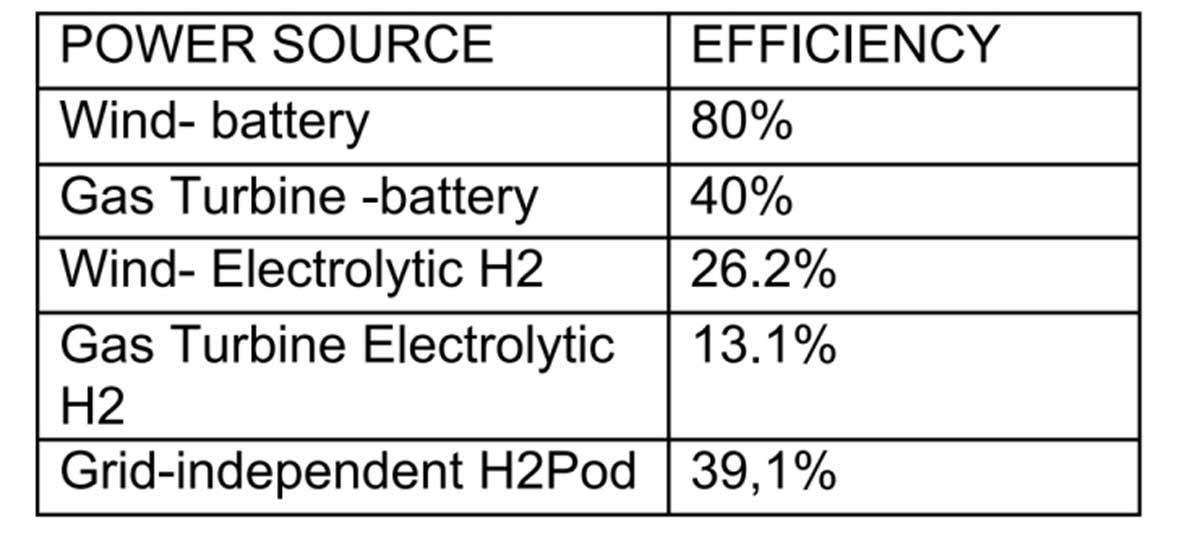
Project Info
Project Description
This article extract is from https://theconversation.com/hydrogen-cars-wontovertake-electric-vehicles-because-theyre-hampered-by-the-laws-of-science139899 where it was published under a ‘creative commons’ license. It describes why hydrogen in less efficient than battery power for cars. There are many holes in this argument, not least the fact that we would need to make millions of tons of batteries every year. I will point out more problems afterwards.
Hydrogen’s efficiency problem
“The reason why hydrogen is inefficient is because the energy must move from wire to gas to wire in order to power a car. This is sometimes called the energy vector transition. Let’s take 100 watts of electricity produced by a renewable source such as a wind turbine. To power an FCEV, that energy has to be converted into hydrogen, possibly by passing it through water (the electrolysis process). This is around 75% energy-efficient, so around one-quarter of the electricity is automatically lost. The hydrogen produced has to be compressed, chilled and transported to the hydrogen station, a process that is around 90% efficient. Once inside the vehicle, the hydrogen needs to be converted into electricity, which is 60% efficient. Finally the electricity used in the motor to move the vehicle is is around 95% efficient. Put together, only 38% of the original electricity – 38 watts out of
100 – are used.

Fig 1
With electric vehicles, the energy runs on wires all the way from the source to the car. The same 100 watts of power from the same turbine loses about 5% of efficiency in this journey through the grid (in the case of hydrogen, I’m assuming the conversion takes place onsite at the wind farm).

Fig 2
Energy efficiency in electric vehicles
You lose a further 10% of energy from charging and discharging the lithiumion battery, plus another 5% from using the electricity to make the vehicle move. So you are down to 80 watts – as shown in the figure opposite. In other words, the hydrogen fuel cell requires double the amount of energy. To quote BMW; “The overall efficiency in the power-to-vehicle-drive energy chain is therefore only half the level of [an electric vehicle].”
What’s wrong with the argument above?
The first column in Figure 1 gives the efficiency of electrolysis process as 75%.
Nobody has achieved this outside of a laboratory. The real-world overall efficiency is 60%. Local electrolytic stations do not require hydrogen transportation but do incur grid and compression losses, so the figure in the second column should be nearer 5%. The article goes on to say vehicle fuel cells are 60% efficient. In fact they are nearer to 50% efficient. Finally, vehicle motors might be 95% efficient but there are drive train and tyre friction losses too- these reduce this last figure to 92%.
So the overall efficiency of electrolytic hydrogen production (electrolytic unit to wheel – on the road) is just 26.2% using wind power at a notional 100% efficiency. If instead we factor in generation losses from using gas-turbines to create electricity at a very generous 50% efficiency this figure drops to a staggeringly low 13.1% .
How does the H2Pod system compare?
The H2Pod uses little electrical energy, but we recognise that scrap hauled to site and co-products taken away uses energy. Also, the hydrogen needs to be compressed for vehicle use. Thus a very pessimistic figure for overall hydrogen production efficiency is 85%.
In other words, for every 100 watts of hydrogen energy that could be produced, the H2Pod delivers 85. If this is used in a fuel cell vehicle with the same losses as in the ‘electrolytic’ case, then we end up with an overall system efficiency of 39.1 % with only trivial need for grid power.
The Battery Case
We assume that the figures (see Figure 2) for the efficiency of the wind-charged battery vehicle are correct at 80%. If instead of wind power a 50% efficient gas turbine genset is used this figure drops to 40%. Against this must be set the loss in road miles and additional tyre wear caused by the need to haul several hundred kilos of battery to achieve comparable mileage to a hydrogen car.
Comparison Table

Comparison Table
Summary
The H2Pod system for powering road transport is 3X as efficient as grid-powered electrolysis systems, and is always totally green. It is 1.5 times more efficient than wind-powered electrolysis systems. Its efficiency is the same as grid-powered battery vehicles, but without the infrastructure demand or battery weight and (unsolved) battery recycling problem.
